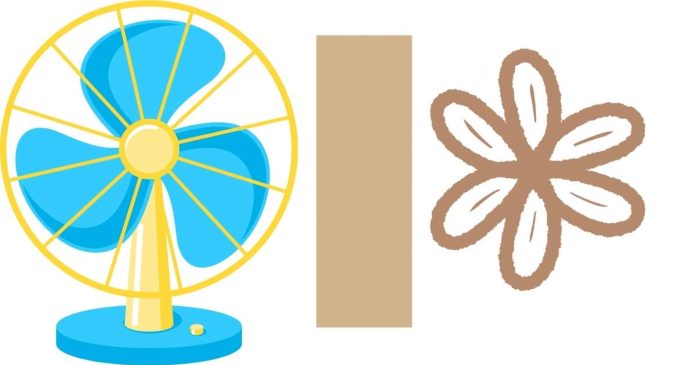The color that rhymes with “fan” is “tan.”
What is Tan?
Tan is a light, brownish color, often described as a pale or light shade of brown with yellowish or grayish undertones. It’s often associated with skin that has been lightly sun-kissed, hence the term “tan” being linked to both the color and the process of getting a tan.
Origin and Etymology
The name “tan” originates from the process of tanning leather. Historically, leather was treated with tannin, a compound found in certain plant barks, to make it durable and water-resistant. The color of the leather after this process became known as “tan,” and over time, the term came to describe the specific shade of light brown we know today.
Shades of Tan
While “tan” is generally recognized as a light brown, it can vary depending on the exact proportions of yellow, brown, and sometimes red or gray. Some common variations include:
- Light Tan: A very pale brown with a subtle yellow or beige tint.
- Medium Tan: A more distinct brownish hue, like the color of lightly tanned skin.
- Dark Tan: A richer, deeper brown with more emphasis on the darker shades.
Cultural and Natural Associations
Tan is a color deeply connected to the natural world and often evokes earthy, warm, and organic feelings. Here are a few associations:
- Nature: Tan is frequently found in sand, wood, and leather. It is the color of dried grasses, sandy beaches, and even some types of soil and bark.
- Fashion: Tan is a neutral color that pairs well with almost any other color. It is commonly used in clothing, especially in casual and formal wear. Tan trousers, shoes, and jackets are classic wardrobe staples, often seen in outdoor or safari-themed fashion.
- Interior Design: Tan is a popular choice for home décor because of its ability to blend seamlessly with both bright and dark colors. It’s a go-to color for creating a warm, cozy environment. Tan walls or furniture provide a soothing backdrop and can make a space feel grounded and comfortable.
Tan in Fashion
In fashion, tan is used extensively in both warm-weather and cold-weather wardrobes. During the summer months, tan is often seen in lightweight fabrics like linen and cotton, creating a relaxed, sun-kissed vibe. In winter, tan is popular in leather jackets, boots, and accessories. It pairs well with everything from bold jewel tones to other neutrals like white, black, and gray.
Key Tan Clothing Items:
- Tan Leather Jackets: Often associated with rugged or vintage style, these are timeless pieces that convey both sophistication and casual ease.
- Tan Pants/Khakis: A wardrobe staple for both casual and business-casual wear, khakis or tan pants are versatile and pair well with nearly every shirt color.
- Tan Shoes: Brown and tan shoes, whether casual loafers or formal oxfords, complement nearly any outfit and work well with denim, chinos, or even suits.
Psychological Impact
The color tan, like other earthy tones, is often seen as calming and neutral. It doesn’t draw attention the way bright colors might, but it’s warm and comforting. People often associate tan with qualities like dependability, stability, and simplicity. It has a grounding effect, making it a color used in spaces meant for relaxation or focus, such as offices or bedrooms.
- Calming Effect: Like other neutral shades, tan can create a calming atmosphere. It is often used in design to promote relaxation, which is why you might see tan tones in spas, wellness centers, and bedrooms.
- Elegance and Warmth: In contrast to colder shades like grays and blues, tan brings warmth and a sense of luxury. It can convey a sophisticated yet approachable look.
Tan in Nature
Tan can be seen in a variety of natural materials:
- Sandy Beaches: The color of the sand is a variation of tan, and it brings to mind images of sun-soaked beaches and the warmth of the sun.
- Wood and Leather: Leather, often tanned to a golden or brownish hue, adds a natural, rustic feel to both fashion and interior décor. Wood, especially woods like oak or walnut, can also have a tan tone, contributing to the earthy, organic feeling in nature.
- Animal Fur: Many animals have tan-colored fur or coats, such as deer, horses, and some dogs, which adds to its natural and earthy connotation.
Tan in Art
In art, tan is often used as a neutral backdrop to allow more vivid colors to pop. It is sometimes used in painting as an underpainting layer, or in landscapes to represent sand, soil, or natural materials.
- Underpainting: In traditional painting techniques, tan or light brown may be used as an underpainting, providing a neutral base that adds depth to the final layers of color.
- Shading and Highlights: Tan is also useful for creating shadows and highlights, particularly in portrait and landscape painting, where it can simulate the effect of sunlight on a surface.
Conclusion
Tan is a versatile, earthy color that symbolizes warmth, nature, and comfort. It’s a color that brings to mind sunny days, soft leather, and calming natural landscapes. Its flexibility in fashion, design, and art makes it a timeless and enduring choice, whether you’re dressing for an occasion or designing a serene living space. Its subtle neutrality allows it to blend harmoniously with almost any color palette, making it an essential part of the color spectrum.
Let me know if you’d like more details on tan or any other color!


